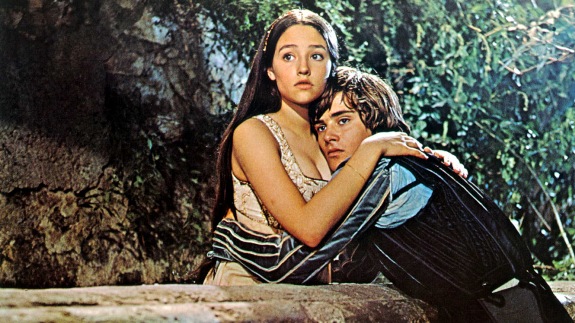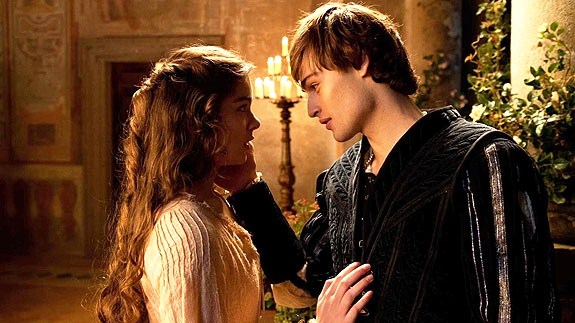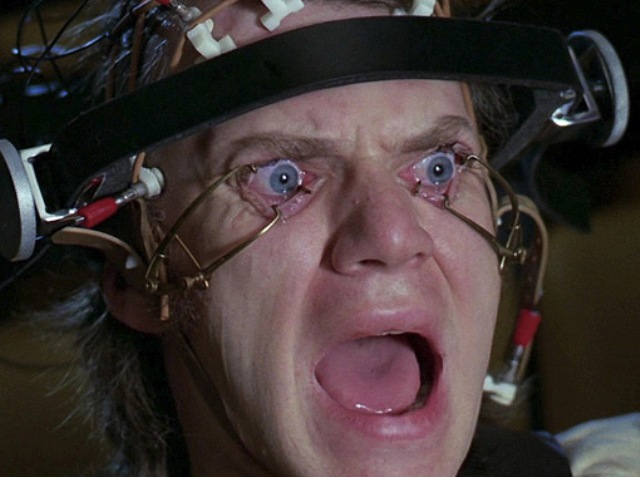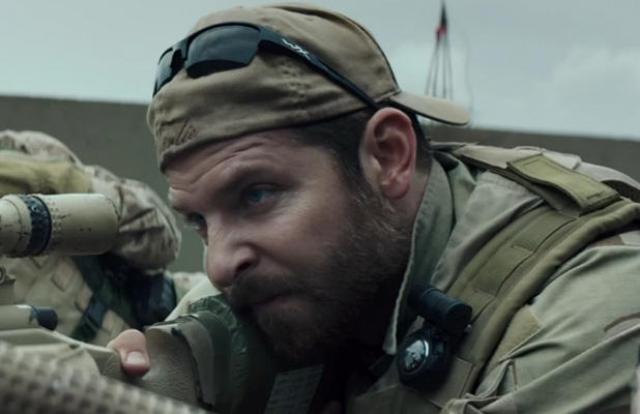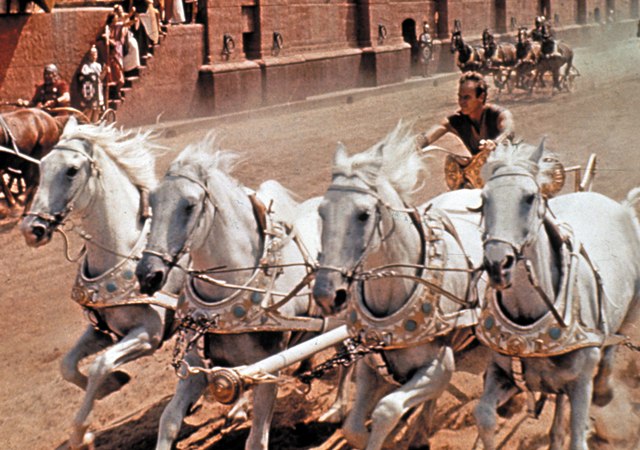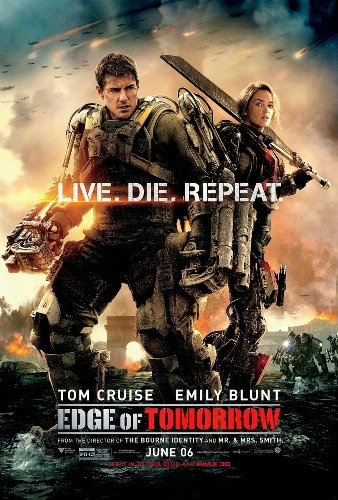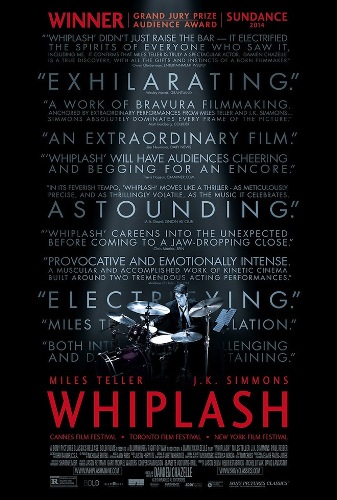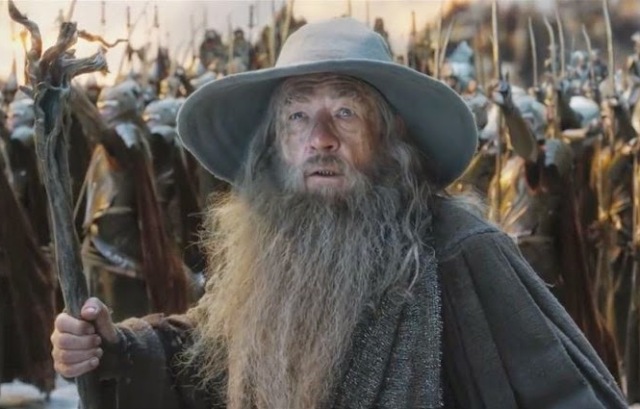It’s the Oscars once again, marking the high point of the cinematic year that was 2014. And once again, it’s a unique year that had a lot of people talking; in particular about who wasn’t nominated. A lot of complaints rose up this year about the racial make-up of the Oscar nominated field, and just how little to no nominations went to minority talent. While this led to cries of racism from some in the media, I honestly don’t believe that it was a decision made by design on the Academy’s part. It unfortunately end up as a result of poor Oscar-campaigning on behalf of actors and filmmakers of different races, as was the case with Paramount Pictures late start on campaigning for their Dr. Martin Luther King biopic, Selma. While Selma did manage to achieve a Best Picture nomination, it was all but forgotten in all other categories, including what would have been a historic nomination for it’s director, Ava Duvernay. But, even as this left many upset with the final field of nominees, it doesn’t mean that movies like Selma will be forgotten overall. The Oscars are a competition based around buzz and publicity. The movies that make the biggest splash in the marketplace or have the most publicity surrounding it will almost always be the ones that prevail. But, as I’ve stated before, this is just a yearly acknowledgement of what Hollywood values at the moment. Great movies will always be great, and a little golden statue is not always the greatest indicator of longevity, although there have been exceptions. But, even still, an Oscar win carries a lot of weight with it and this year’s field is full of many worthy, and maybe one not so worthy films up for the little golden man. What follows are my picks for the top Oscar categories, and who I think will win and who should win.
BEST ADAPTED SCREENPLAY
Nominees: American Sniper (Jason Hall), The Imitation Game (Graham Moore), Inherent Vice (Paul Thomas Anderson), The Theory of Everything (Anthony McCarten), and Whiplash (Damien Chazelle)
I’m going to state this right away here because it will be a running theme throughout this article; The Theory of Everything is a horrible movie and I hope that it comes up empty handed at this year’s Oscar ceremony. Now, with that said, this is thankfully one category that it has no chance of succeeding in. As of right now, Writer’s Guild award winner The Imitation Game seems to be going into the race as the favorite. And despite some of the conventionality of the movie itself, I actually think that Imitation Game‘s script is still worthy enough of the award. Writer Graham Moore filled his screenplay with enough intrigue and witty dialogue to keep us engaged, and he managed to present a nice, complex picture of an unsung hero of the Second World War. But, is this movie also my own favorite in the category. If I had to choose, I would give this award to Whiplash‘s Director/Writer Damien Chazelle. Whiplash was one of the most exhilarating cinematic experiences of the year, and Chazelle’s fiery and explosive screenplay was a big part of that. I would award it just for J.K. Simmon’s lines alone. But, unfortunately for Chazelle, this was his first feature film, and that lack of a long body of work may end up costing him in the end. But, I dare you to find a debut screenplay as expertly crafted as Whiplash. A potential spoiler here could also be Jason Hall’s script for the controversial by expertly crafted American Sniper, which would also be a deserving choice. But, in the end, expect to see Imitation Game the winner.
WHO WILL WIN: Graham Moore, The Imitation Game
WHO SHOULD WIN: Damien Chazelle, Whiplash
BEST ORIGINAL SCREENPLAY
Nominees: Boyhood (Richard Linklater), Nightcrawler (Dan Gilroy), Foxcatcher (Dan Futterman and E. Max Frye), Birdman (Alejandro Gonzalez Inarritu, Nicolas Giacobone, Alexander Dinelaris Jr., and Armando Bo), and The Grand Budapest Hotel (Wes Anderson and Hugo Guinness)
Another running theme you will find in this article is my love for the movie Birdman. It was my pick for the best of the year and I want it to win pretty much everything that it is nominated for. Now of course that won’t happen, but Birdman is still a strong contender in the race, and this is one category that it’s still very much a favorite it. Even despite having been worked on by a team of writers as opposed to one singular vision, Birdman‘s script is still one of the most emotionally moving and creative of the year. The film’s screenplay did earn a well deserved Golden Globe, but it’s loss at the WGA awards has shown that it’s not a lock either. The WGA winner The Grand Budapest Hotel seems to be the movie with the momentum right now. Giving the award to Wes Anderson here would probably be the consolation prize for his movie, which doesn’t look like a strong contender in any of the other races. And Anderson has had a strong body of work for many years, so he’s long overdue for recognition from the Academy. Though, that being said, The Grand Budapest Hotel didn’t quite grab me in the same way that Birdman did. I liked it well enough, but I also think that it’s not among my favorite Anderson films (that would be something like Fantastic Mr. Fox or Rushmore). But, if he wins it here, he’s not undeserving. I just wish that it wasn’t in competition with my favorite movie. With all that said, I would expect this to be Wes Anderson’s year, but this could also go to Birdman if the movie has a big night.
WHO WILL WIN: Wes Anderson and Hugo Guinness, The Grand Budapest Hotel
WHO SHOULD WIN: Alejandro G. Inarritu, Nicolas Giacobone, Alexander Dinelaris, and Armando Bo, Birdman
BEST SUPPORTING ACTOR
Nominees: Mark Ruffalo (Foxcatcher), Edward Norton (Birdman), J. K. Simmons (Whiplash), Robert Duvall (The Judge), Ethan Hawke (Boyhood)
This is by far the easiest race to call. It’s J.K. Simmons, unquestionably. He was the favorite going into this race pretty much from the moment his performance in Whiplash was first seen by audiences. Thereafter, he has won every award there is. If he doesn’t walk away a winner at this year’s Oscar ceremony, then it will be the biggest upset in the history of the awards, which I highly doubt will happen. He is absolutely deserving of the honor as well. Not only did he deliver what I think is the performance of the year, as the music teacher from hell in Whiplash, but he also is one of the most highly regarded character actors in the business. He’s been a presence in Hollywood for many years, never quite headlining any particular film but still enriching any project with his workman-like approach to every role, making him one of the most reliable actors around. His performance in Whiplash would be more than just a legacy award however, because he is indeed the standout in this category. The only other competition he might have would be Edward Norton’s delightfully quirky turn in Birdman, but even that is a very distant second place. The others nominated are purely riding the coattails of the selected films, while Robert Duvall is nominated here purely because he’s Robert Duvall. This is an even money category, and I don’t expect anyone but J. K. Simmons to be up there on Oscar night. It might be the first award given out too, given that there’s no suspense behind it.
WHO WILL WIN: J.K. Simmons, Whiplash
WHO SHOULD WIN: J.K. Simmons, Whiplash
BEST SUPPORTING ACTRESS
Nominees: Patricia Arquette (Boyhood), Meryl Streep (Into the Woods), Keira Knightley (The Imitation Game), Laura Dern (Wild), Emma Stone (Birdman)
The strange thing about the last few weeks of this race has been the deflation of Richard Linklater’s Boyhood as the awards front-runner. It came into the race looking like the clear favorite, until it began to fall in the Guild races to Birdman. Now, it looks to be the runner up in many of the categories that it once appeared to be running away with. The only race that Boyhood has remained strong in throughout the whole race has been this one. Patricia Arquette has held onto her front-runner status this whole time, and still looks to be unchallenged going into the final stretch. And she’s not undeserving either. Considering the nearly 12 year stretch that the movie was in production and that she was able to maintain her focus on her character throughout that whole run (better than the rest of the cast I might add) is really quite an achievement, and is worthy of recognition. Arquette also has a solid body of work behind her, both on film and TV, so her win here is also a way of awarding her for a solid body of work in the industry. The remainder of the category is also strong, apart from the obligatory nomination for Meryl Streep in the mediocre Into the Woods. Emma Stone delivers the best performance of her still young career, and Keira Knightley did valiantly well with a character who could have easily been weak if not performed in the right way. Laura Dern was the surprise here, and I think her nomination is about as far as the accolades for her performance will go. But like J.K. Simmons in the Supporting Actor category, this is another race with a clear favorite, and one that I think deserves her place in the spotlight.
WHO WILL WIN: Patricia Arquette, Boyhood
WHO SHOULD WIN: Patricia Arquette, Boyhood
BEST ACTOR
Nominees: Eddie Redmayne (The Theory of Everything), Benedict Cumberbatch (The Imitation Game), Michael Keaton (Birdman), Bradley Cooper (American Sniper), Steve Carell (Foxcatcher)
Now we come to what is probably the most contentious race this year, at least with the acting categories. It is also the race that pits my favorite movie of the year against one of my most hated. It shouldn’t surprise anyone that I want Michael Keaton to win this award so badly. And yes, a part of that is because I’m a big fan of Batman, and Michael Keaton’s performance as the caped crusader is a big part of my fandom. It’s also part of the basis of his character in Birdman, which is another reason why I love that film so much. But, after looking at all the nominees here, I can’t help but think that Keaton’s performance was also the strongest as well. His performance as washed-up actor Riggan Thompson is captivating and heartfelt, and also hilarious. You also have to admire an actor who can hold his own in a film made up of long takes. Unfortunately, as the movie’s stock has gone up in the Oscar race, Keaton’s front-runner status has fallen. The one taking the lead now is Eddie Redmayne, for his portrayal of crippled Astro-physicist Dr. Stephen Hawking in The Theory of Everything. Now, let me state that while I hate the movie itself, Redmayne’s performance is easily the best thing in it. I just wish his performance was placed in a better, less pandering film. What upsets me is that once again Hollywood is falling into the cliche of honoring an able bodied actor for playing a person with a disabilty (and a historical one as well) which is one of the most overused plays in the Oscar-bait textbook. Redmayne tries, but I still didn’t see his work as groundbreaking either. Unfortunately, it looks like it’s going to fool enough people to rob a veteran actor of his long overdue recognition.
WHO WILL WIN: Eddie Redmayne, The Theory of Everything
WHO SHOULD WIN: Michael Keaton, Birdman
BEST ACTRESS
Nominees: Marion Cotillard (Two Days, One Night), Felicity Jones (The Theory of Everything), Rosamund Pike (Gone Girl), Reese Witherspoon (Wild), Julianne Moore (Still Alice)
This has been one of the more surprising categories of the year. Despite having appeared in a film that has generated little to no buzz this awards season, Julianne Moore has entered this race as the clear front-runner. Her performance in Still Alice is good, which is not surprising from the usually reliable actress, but is it really that noteworthy. Something about this race tells me that it didn’t matter what movie Julianne Moore appeared in last year, it just seems like it’s finally her time. This honor is more of a legacy award and less of an acknowledgement of her actual work in Still Alice, given that Julianne Moore has been a runner-up in so many other races leading up to this. Hollywood wants to make her a part of the club of Oscar-winners, and she’s not undeserving of that either. However, if I had to make a choice among the nominees in this category, it wouldn’t be Julianne Moore. Instead, I would pick Rosamund Pike for her outstanding, and gutsy performance in Gone Girl, a movie that was surprisingly overlooked in most other categories this year. Pike’s performance was a knockout, playing one of the most psychotic and devious characters I’ve seen on the big screen in a while. Pike has usually played supporting roles up to now, but she wowed in her first lead role and pretty much ran away with the movie, seeing as how she’s the only one involved who got a nomination. Perhaps the fact that Rosamund’s character is a little too dark for some audiences might be part of why she’s not gaining traction in this race, but even still, I wouldn’t mind seeing her spoil Julianne Moore’s seemingly unstoppable train to the top award.
WHO WILL WIN: Julianne Moore, Still Alice
WHO SHOULD WIN: Rosamund Pike, Gone Girl
BEST DIRECTOR
Nominees: Richard Linklater (Boyhood), Morten Tyldum (The Imitation Game), Wes Anderson (The Grand Budapest Hotel), Alejandro Gonzalez Inarritu (Birdman), and Bennett Miller (Foxcatcher)
Here is another too close to call race. It’s down to two visionary, independent filmmakers who delivered us movies based around very different cinematic gimmicks. One the one hand you have Richard Linklater, who devoted 12 years of his life to crafting Boyhood, which follows the life of a young boy as he grows up in real time over the progression of the movie. And on the other hand, you have Alejandro Inarritu who crafted a movie made up of long takes all stitched together to make the movie look like it was all done in one long shot. Both directors did a commendable job with these complex projects, but in the end, only one can take home the award. For a while, it looked like Linklater was going to be the runaway favorite, having picked up numerous critics awards, and the Golden Globe. But, when the Director’s Guild made their choice (one that usually almost always coincides with the eventual Oscar winner), the award went to Inarritu. Now, Inarritu is the one carrying the momentum into the Oscar race, which again makes me very pleased. Linklater is a talented filmmaker, but I quite frankly have never really gotten into his body of work. I don’t dislike his movies; most of them are actually really good, including Boyhood. But at the same time, his style has never wowed me as a viewer the same way Inarritu did with Birdman. Still, Linklater’s labor of love for over a decade is still hard to ignore. Although I see Inarritu deservedly winning out in the end, it wouldn’t upset me if Linklater came out on top either.
WHO WILL WIN: Alejandro G. Inarritu, Birdman
WHO SHOULD WIN: Alejandro G. Inarritu, Birdman
BEST PICTURE
Nominees: Boyhood, The Theory of Everything, Selma, The Imitation Game, The Grand Budapest Hotel, Birdman, American Sniper, and Whiplash
Of course we now come to the big award of the night, and once again, it has become a race that’s too close to call. Conventional wisdom would have you believe that the sprawling, 3 hour long Boyhood would be the clear front-runner, and indeed it is still selected as a favorite in most of the polling. But, Birdman has been coming on strong in recent weeks, and I think that it has enough to topple Boyhood. Certainly it’s wins at the Guild awards have helped. But even with that momentum, Boyhood is still looking like the movie to beat, and I wouldn’t be surprised if the Academy splits the top awards again like they did the year prior when 12 Years a Slave won Best Picture and Alfonso Cuaron winning Director. Overall, it basically comes down to these two competitors. The only potential spoilers could be either the quirky The Grand Budapest Hotel or the controversial American Sniper, and I highly doubt either has the weight behind them to match up to the top two. I, of course, want Birdman to win it all. It would be the first time since 2006 that my favorite movie of the year takes home the top award (that being Martin Scorsese’s The Departed). But, with a race this close it’s hard to say how it will turn out. If I had to make a guess right now, on the eve of the awards, I would say that Inarritu’s Birdman carries the entire night, picking up the most awards on it’s way to a Best Picture win, leaving Linklater and his film as the runners up. It’s hard to put down a movie that took 12 years to complete, but unfortunately, I felt that Boyhood was more interesting as a gimmick than it was as a movie. Birdman was everything I wanted it to be and more, and that’s why I’m rooting for it at the Oscars this year.
WHO WILL WIN: Birdman
WHO SHOULD WIN: Birdman
So, I’ve shared my thoughts on the big categories, but I think I’ll also quickly run through who I think will win all the other awards as well (of note, these are my picks and not necessarily my favorites, as I have yet to see each and every film nominated):
Animated Feature: How to Train Your Dragon 2; Cinematography: Birdman; Costume Design: The Grand Budapest Hotel; Documentary Feature: CitizenFour; Documentary Short: Crisis Hotline: Veterans Press 1; Film Editing: Boyhood; Foreign Language Film: Leviathan; Makeup and Hairstyling: Guardians of the Galaxy; Original Score: The Grand Budapest Hotel; Song: “Everything is Awesome” from The Lego Movie; Production Design: The Grand Budapest Hotel; Animated Short: The Bigger Picture; Live Action Short: Butter Lamp; Sound Editing: American Sniper; Sound Mixing: Birdman; Visual Effects: Guardians of the Galaxy
It should end up being an interesting ceremony in the end. Of course, in the grand scheme of things, none of this will really matter. The Oscars are more of a reminder of how we viewed movies in the previous year, and not about how they will age in the years to come. Sometimes it is worthwhile to bestow an award to a movie that deserves the spotlight, especially when it’s a small movie that’s demanding to be seen, like Whiplash. But, great movies find their audiences no matter what and some of last year’s best films were not even spotlighted in this year’s show (The Lego Movie, Gone Girl, Snowpiercer just to name a couple). But even if it infuriates us every year, we still come back again and again and watch the Oscars religiously. It’s a part of our culture to celebrate the movies and the Oscars are a big part of that experience. If there’s one thing that the Academy has done right it’s to make us think that their Award matters, and in the short term it indeed can. Small movies get that much needed boost after the awards, and most films that come away from the ceremony a winner wear that as a badge of honor. Hopefully, this year, the awards go to the most deserving people and that the whole affair ends up being an entertaining show overall. And once it’s all done, it will again be time to start this cycle all over again. In the end, it gets us talking about movies and that’s what we love the most about Oscar season.




